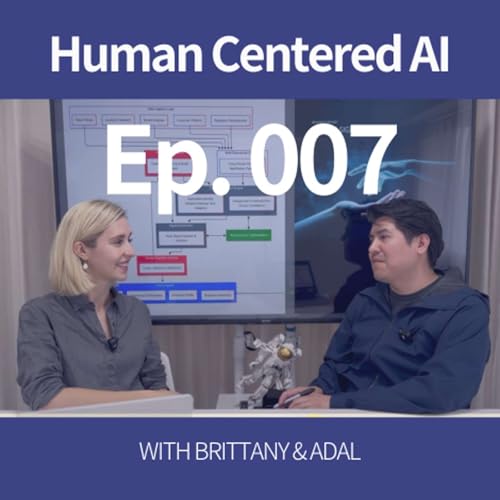Send us a text
The Legal Bridge: Technology to Trust | S3E8
Guest: Darryl Osuch - Unit Manager, Legal Operations at JERA Co., Inc. | Host of The Legal Ops Podcast
Episode Length: 51 minutes
Episode Description
"I feel like I'm fighting an education battle."
Darryl Osuch identifies what many organizations are missing about AI adoption. Not a technology battle. Not a process battle. An education battle.
In this conversation, Darryl shares what he's learning at the intersection of legal operations, AI implementation, and organizational trust. His perspective—both mechanic and driver of AI systems—reveals why the gap between capability and comprehension might be the real bottleneck.
Microsoft's research shows 70% of AI transformation involves people, 20% workflows, and only 10% algorithms. Yet many organizations find their resource allocation tells a different story. Darryl brings rare expertise: implementing generative AI at JERA while building frameworks that help people actually trust and adopt it.
Key Themes
The Translation Gap
Legal teams are discovering they're not gatekeepers—they're translators between technical capability and human comprehension. When technical concepts get explained but not understood, that's where adoption stalls.
Trust as Architecture
Trust operates in layers: data, algorithm, company. When one layer doesn't hold, the entire stack can struggle—regardless of technical capability.
The Education Battle
The real challenge isn't teaching people to use AI tools. It's making complexity accessible without losing truth. Translation capability is becoming strategic, not supplementary.
Democratization with Guardrails
"Vibe coding" enables people who've never coded to build solutions. The question becomes: How do you create frameworks that enable exploration while maintaining standards?
The Soft Skills Advantage
When everyone has access to similar AI tools, what creates distinction? Humanity, authenticity, judgment, empathy, wisdom—the entirely human elements.
Key Insights from Darryl
💭 "I feel like I'm fighting an education battle. That's literacy. It's not technical, it's not procedural."
💭 "If a company does it right and allows democratization with simple guardrails, users have more autonomy, feel more in control, and stay connected to the process."
💭 "I think one of the necessary roles and powerful functions of a lawyer is to be some kind of translator."
💭 "The technology almost always outpaces regulation."
💭 "People will start actively putting humanity and authenticity first when they are looking for something."
The Reframing Question
"What is the impact of the work you're doing right now, and how can you improve or magnify that impact?"
Not "should we use AI?" but "what am I trying to accomplish, and could AI help me accomplish it better?"
Purpose first. Tool second.
About Darryl Osuch
Darryl Osuch solves problems most organizations don't see yet. As Unit Manager of Legal Operations at JERA Co., Inc. in Tokyo, he automates workflows, implements generative AI, and helps legal teams understand what their technology actually does.
Host of The Legal Ops Podcast and fluent in both law and code, Darryl's philosophy is simple: be both mechanic and driver. Know how it works, not just that it works.
Connect with Darryl:
- The Legal Ops Podcast on Spotify
- LinkedIn: linkedin.com/in/daryl-osuch
 Nov 25 202536 Min.
Nov 25 202536 Min. 35 Min.
35 Min. Nov 8 202549 Min.
Nov 8 202549 Min. Oct 22 202551 Min.
Oct 22 202551 Min. 31 Min.
31 Min. 40 Min.
40 Min. 54 Min.
54 Min. 52 Min.
52 Min.

